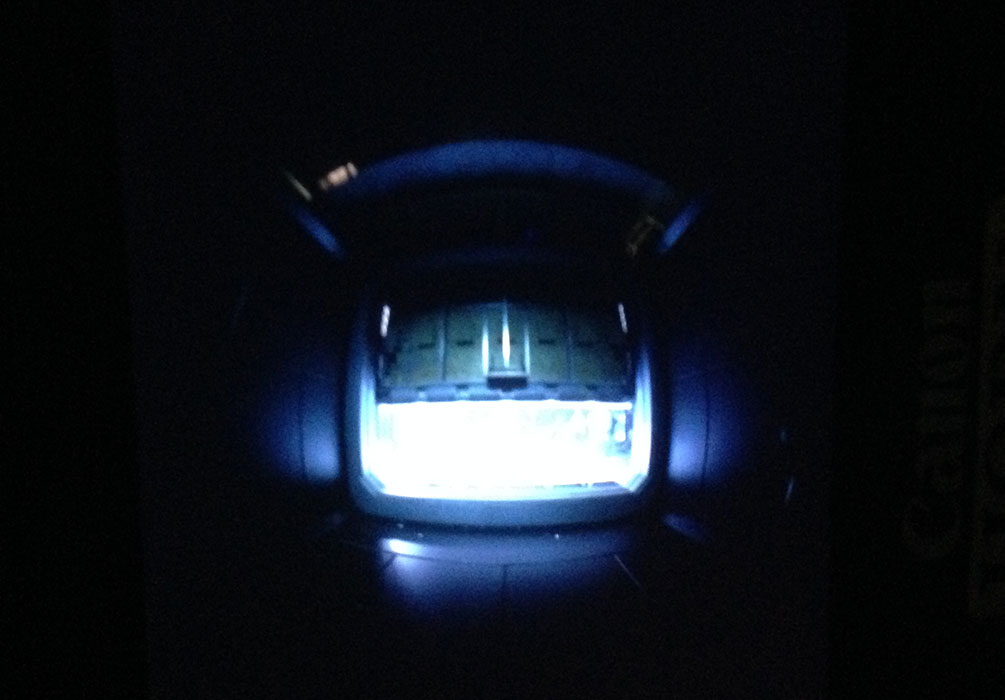Independence Day: Resurgence Case Study
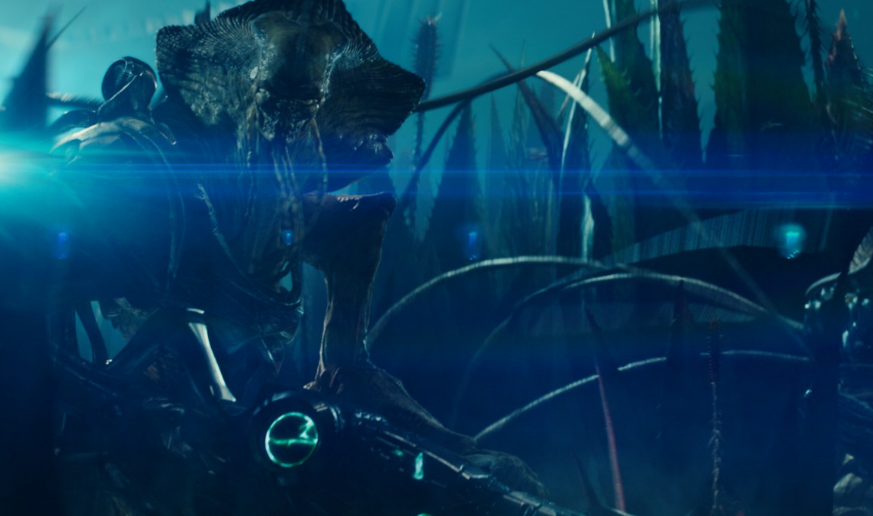
Case Study
On July 2 1996, Roland Emmerich stunned audiences with alien invasion epic Independence Day – two decades on and he has returned with the even more apocalyptic Independence Day: Resurgence. Image Engine joined the project from inception to reprise the role of the alien Colonists, deliver a variety of digital vehicles and create massive 100% computer generated environments. The studio drew on the past 20 years of visual effects evolution to deliver something even “bigger than the last one”!
1996’s Independence Day is undoubtedly a classic. Its money shot – a city-sized alien Mothership poised above the White House, destroying the structure inside out with a piercing beam of light – has become a defining image of sci-fi visual effects.
Audiences demanded a sequel, and 20 years later it has arrived. The vengeful extraterrestrials have returned in Independence Day: Resurgence, this time in ships whose size have more in common with entire planets than they do single cities. With two decades of technological advancement behind it, mankind can only hope that it is adequately prepared to stem the tide of worldwide devastation.


 It makes for an interesting parallel with life outside the narrative of the film – the two decades of technological evolution have been mirrored in the world of visual effects, giving artists 20 years to prepare for Independence Day: Resurgence’s challenging technical requirements.
It makes for an interesting parallel with life outside the narrative of the film – the two decades of technological evolution have been mirrored in the world of visual effects, giving artists 20 years to prepare for Independence Day: Resurgence’s challenging technical requirements.
Image Engine made the most of those two decades’ worth of advancement, utilizing enhanced tools and software to tackle 170 challenging shots, from alien environments to the tentacled creatures themselves.
“A huge plus for us was the opportunity to work with Roland [Emmerich, director], Volker [Engel, Unchartered Territory visual effects supervisor] and Marc [Weigert, Uncharted Territory visual effects producer] again,” says Image Engine visual effects executive producer Shawn Walsh.
“The studio previously worked with Roland and visual effects team Uncharted Territory on 2012 and White House Down. I admire so much how thoughtful they are in terms of the entire workflow from ticker to tape. They’re technically aware and strategically savvy – something that helps our process immensely and therefore ultimately helps the film!”
An army of aliens
Independence Day’s extraterrestrials are as imaginative as they are iconic. Their exoskeleton battle suits feature spindly legs, whipping tentacles, and a large crest of a head, which splits open to reveal the alien “pilot” hidden inside. It was up to Image Engine’s artists to bring the towering alien species back to life across 100 of Independence Day: Resurgence’s detailed shots.
Image Engine was perfectly prepared for the task at hand, given its lineage stretching from District 9’s subjugated prawns to Jurassic World’s velociraptors. This time, however, the team needed to make sure that its creations remained as similar as possible to the practical alien effects delivered in the 90s.
“It was really important to Roland that we matched the original designs,” begins Image Engine visual effects supervisor Martyn Culpitt, who worked closely with Uncharted Territory’s Volker Engel across the film. “Resurgence needed to have the same iconic look as the 1996 film, immediately bridging that 20 year gap while also selling the audience on the believability of these creatures.”












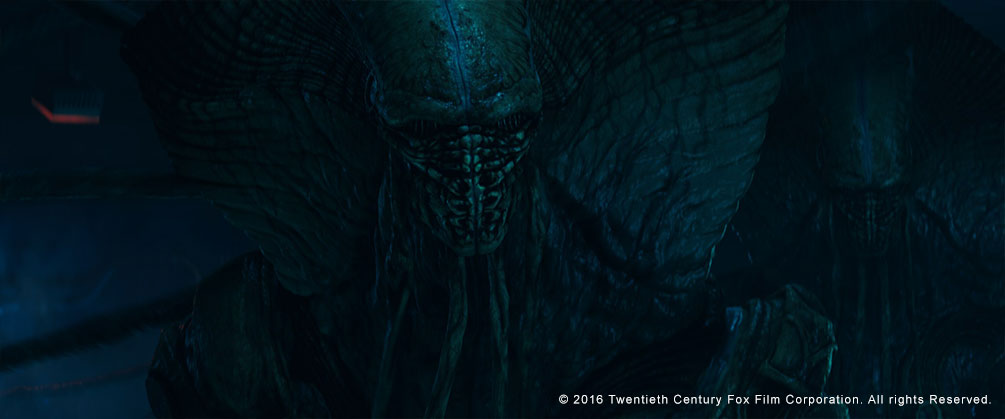
Culpitt and team worked on two different kinds of aliens – the Colonists reprising their role from the original film and the new Soldiers with their amped up stature. These creatures were based on original designs from the 1996 film, in which the aliens lifelike appearance had been achieved via practical puppet effects. This time, of course, the approach would be full CG.
In order to accurately recreate the creatures, Image Engine’s artists were given access to scans and photographs of one of the 1996 alien maquettes that had been housed in a Berlin museum. The team also received and expanded upon an initial creature design for the 2016 film, provided by The Aaron Sims Company.
Given Image Engine’s pedigree in high-end, ultra-realistic creature work, the studio was considered as more than just a content creator – it was brought on as a full design partner, with its expertise requested on many elements of the alien design.
“The production didn’t just dump a bunch of approved final artwork on us and say, ‘Make it look like this!’” says asset supervisor Barry Poon. “They came to us for our ability to explore and experiment with the alien’s look. We had a lot of input there. It’s really great to have a relationship with the production like that – the results are always much stronger.”
When launching into full CG production, one of big areas of focus for the team was the creature’s face, given its prominence: “Subtle details in the face are so important, because as humans we instinctively look at that first,” explains Culpitt. “It’s draws you in and gives you a connection with the character.”
The team explored various ways to add realistic muscle definition, bone and skin structures to the computer generated aliens, incorporating nuanced details like breathing movements and nostril flares to the facial shapes. The artists also explored realistic ways for the exoskeleton head to split open, revealing the alien operators inside.
However, while it was important to make the creatures biologically believable, an element of alien otherness had to be retained: “We kept the alien quality by adding small details,” says Culpitt. “For instance, the eye sockets are empty, but we added a small glint like there’s something in there – it’s pretty spooky.”
Tangled in tentacles
Along with their large, impressive crowns, another major trademark of Independence Day’s aliens are the frenzied tentacles that whip out from their backs, thrashing with intensity and violence.
These tentacles posed an interesting challenge in the 2016 sequel, as the appendages needed to flail and interact in a way reminiscent of the 1996 practical versions, but in greater number and variety.
“To achieve that, we developed an in-house system that meant we wouldn’t have to animate each tentacle frame-by-frame,” explains Image Engine animation supervisor Jason Snyman. “You could run them through the dynamics system and they would move automatically in just the same way as they did in the original film.
“Per-alien there were at least seven tentacles, but each one of those had its own controls so we could do what we wanted with it,” he continues. “We could wrap them around a door handle or make them hit a wall – it looked really good!”
As with the design of the aliens, Image Engine was also given a great deal of freedom around the locomotion of the creatures. “One of the early chats we had with the production was about the movement of the aliens,” says Mark Wendell, CG supervisor. “We asked them how they wanted the creatures to move, and they said, ‘You tell us!’”





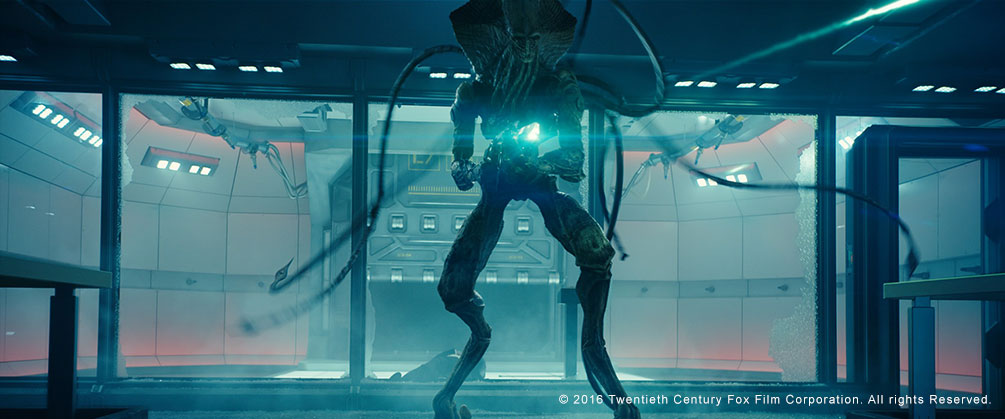


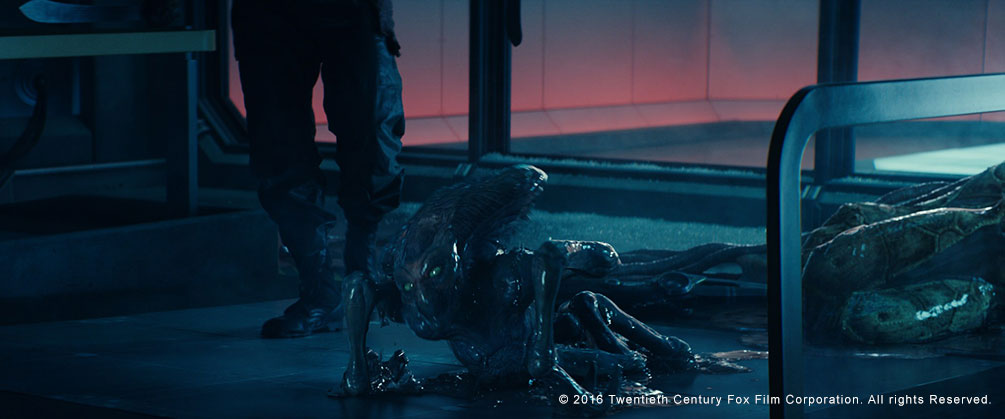
In order to create quick blocking passes and reference animation, Image Engine used Xsens motion capture suits.
“You could throw a suit on in 20 minutes and walk around pretending to be an alien, acting out a shot,” notes Snyman. “Because the proportions of the alien were very close to a human, the data transferred almost seamlessly. You could do hundreds of takes per day, with other animators giving pointers. It was a great way to block out sequences that we could then build upon.”
In fact, one of Image Engine’s mocap animation tests included a small surprise for the production team: “We sent them an early mocap test of an alien doing some disco dancing,” laughs Wendell. “They appreciated the fact that we were having fun, but it was also a great test to see if the tentacle sims would work under even the severe circumstances of disco!”
It’s a jungle up there
In addition to Independence Day: Resurgence’s creatures, Image Engine contributed to a variety of large-scale vehicle and environment work.
Among the most complex of these digital environments was that witnessed in the ‘Foliage’ sequence. Here, the film’s heroes crash-land in a murky, atmospheric swamp situated on the invading aliens’ Mothership. Part advanced technology, part exotic jungle, several fighter pilots wade through the environment in waist-high water, wandering past strange and otherworldly flora – some of which rises 24-foot high.







Image Engine drew on its established pipeline for busy jungle environments – something it had recently refined for Jurassic World’s thrilling raptor chase sequence.
“In the Independence Day: Resurgence sequence we have nearly half a million plants,” says Culpitt. “All of those plants were simulated and have interaction with the aliens and actors, which is happening alongside the water, fog, insects and other elements we have in the scene. It all serves to really heighten the immersion of the moment.”
Although the actors themselves were filmed walking in real water on a soundstage, the sequence also included large-scale water sims that interacted with floating plants and debris on the surface. These water sims – and the surface fog across the scene – were also driven by the actors’ and CG aliens’ movements. “It ended up being a really complex scene, with the huge amount of plant life and various FX sims bringing everything to life.”
Bigger than the last one
Another huge and complex build came to the Image Engine team in the form of a sequence dubbed ‘Escape’. As the title suggests, the sequence finds the film’s heroes attempting to flee the alien Mothership rather than work their way into it.
Again, the actors were shot on bluescreen, with the Mothership’s digital environment built around them. And it was large indeed: the environment – into which Image Engine composited the actors, multiple alien ships, a control tower, and several imposing alien columns, among other details – had a diameter of almost one mile. It was a scene of truly epic scale.
Initially, a small section of the platform featured in the scene was covered in a practical effect that mimicked the look of a strange alien surface. The day before the on-set shoot began, however, Roland Emmerich chose not to use the material, instead deciding to paint that part of the set blue, allowing Image Engine’s digital artists do their thing.
“We realized it was going to be an expensive decision as it was late in the production cycle, but knew we could absolutely do it,” remembers Wendell. “We gave the production the confidence to paint the set element blue and let us create it from scratch. It gave us a lot of flexibility to explore and iterate on the look of the Mothership surface material – they didn’t have to be locked into that initial look.”
The work proved extremely successful: “Roland saw a lot of what we did on the platform and said, ‘We never need to shoot anything again! I can shoot everything on blue!’” laughs Culpitt.
An indication of further trust placed in the Image Engine team came when Culpitt suggested an unplanned shot during principal photography.
“We worked on an expansive prison sequence, where hundreds of aliens are seen being held in cells,” explains Culpitt. “We created the full-CG prison asset, including everything that surrounds it, and put the alien colonists into the cells.







“We’d taken some HDRI stills inside a cell that was being docked inside the isolation chamber, and they looked really cool,” he continues. “We showed Roland and he said, ‘Right! The next shot’s up!’. He literally decided to have a shot because he decided it looked cool! It’s in the trailer – the alien steps forward and you see light spilling into the cell as the door slowly opens.



“Those kind of moments just go to show how important it is to be on set as much as you can – you need to be there on the other side of the camera not just to ensure an efficient post-production process, but also to explore exciting creative opportunities.”
Here’s to another 20 years
By the end of the production, Image Engine’s 170 shots also included a full-CG interior environment of Cheyenne Mountain and a 160m-long alien troop transport. “Named the ‘harvester’, it started off a certain size, and grew three times the size by the end – it’s massive!” says Culpitt. “Roland does like to go big.”
And Independence Day 2 was certainly a big project, with big creative needs. But with its trademark approach to careful preparation, and by once again collaborating very closely with the production throughout both pre and post, Image Engine was able to deliver more environmental and creature work that stands alongside the studio’s proud lineage.
“We continually strive to make things bigger and better with each show,” Culpitt concludes. “It’s a different challenge each and every time, and the team grows alongside that challenge. The biggest thrill is seeing those visuals up on screen, and knowing all of the talent and effort that was poured into every last pixel. It makes us truly proud.”
“We can’t wait to see what Roland and his visual effects collaborators get up to next,” says Walsh. “We’re ready for the next challenge!”



